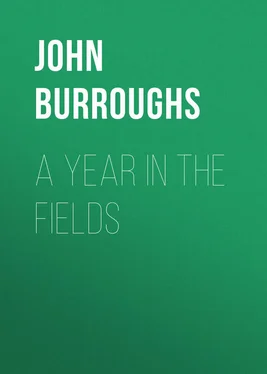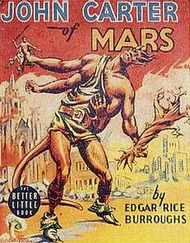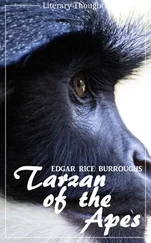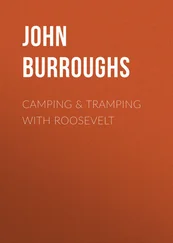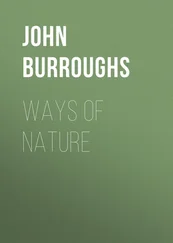John Burroughs - A Year in the Fields
Здесь есть возможность читать онлайн «John Burroughs - A Year in the Fields» — ознакомительный отрывок электронной книги совершенно бесплатно, а после прочтения отрывка купить полную версию. В некоторых случаях можно слушать аудио, скачать через торрент в формате fb2 и присутствует краткое содержание. ISBN: , Жанр: foreign_antique, foreign_prose, Историческая проза, на английском языке. Описание произведения, (предисловие) а так же отзывы посетителей доступны на портале библиотеки ЛибКат.
- Название:A Year in the Fields
- Автор:
- Жанр:
- Год:неизвестен
- ISBN:http://www.gutenberg.org/ebooks/31292
- Рейтинг книги:4 / 5. Голосов: 1
-
Избранное:Добавить в избранное
- Отзывы:
-
Ваша оценка:
- 80
- 1
- 2
- 3
- 4
- 5
A Year in the Fields: краткое содержание, описание и аннотация
Предлагаем к чтению аннотацию, описание, краткое содержание или предисловие (зависит от того, что написал сам автор книги «A Year in the Fields»). Если вы не нашли необходимую информацию о книге — напишите в комментариях, мы постараемся отыскать её.
A Year in the Fields — читать онлайн ознакомительный отрывок
Ниже представлен текст книги, разбитый по страницам. Система сохранения места последней прочитанной страницы, позволяет с удобством читать онлайн бесплатно книгу «A Year in the Fields», без необходимости каждый раз заново искать на чём Вы остановились. Поставьте закладку, и сможете в любой момент перейти на страницу, на которой закончили чтение.
Интервал:
Закладка:
The woodpeckers do not each have a particular dry limb to which they resort at all times to drum, like the one I have described. The woods are full of suitable branches, and they drum more or less here and there as they are in quest of food; yet I am convinced each one has its favorite spot, like the grouse, to which it resorts especially in the morning. The sugar-maker in the maple-woods may notice that this sound proceeds from the same tree or trees about his camp with great regularity. A woodpecker in my vicinity has drummed for two seasons on a telegraph pole, and he makes the wires and glass insulators ring. Another drums on a thin board on the end of a long grape-arbor, and on still mornings can be heard a long distance.
A friend of mine in a Southern city tells me of a red-headed woodpecker that drums upon a lightning-rod on his neighbor's house. Nearly every clear, still morning at certain seasons, he says, this musical rapping may be heard. "He alternates his tapping with his stridulous call, and the effect on a cool, autumn-like morning is very pleasing."
The high-hole appears to drum more promiscuously than does downy. He utters his long, loud spring call, whick – whick – whick – whick , and then begins to rap with his beak upon his perch before the last note has reached your ear. I have seen him drum sitting upon the ridge of the barn. The log-cock, or pileated woodpecker, the largest and wildest of our Northern species, I have never heard drum. His blows should wake the echoes.
When the woodpecker is searching for food, or laying siege to some hidden grub, the sound of his hammer is dead or muffled, and is heard but a few yards. It is only upon dry, seasoned timber, freed of its bark, that he beats his reveille to spring and wooes his mate.
Wilson was evidently familiar with this vernal drumming of the woodpeckers, but quite misinterprets it. Speaking of the red-bellied species, he says: "It rattles like the rest of the tribe on the dead limbs, and with such violence as to be heard in still weather more than half a mile off; and listens to hear the insect it has alarmed." He listens rather to hear the drum of his rival, or the brief and coy response of the female; for there are no insects in these dry limbs.
On one occasion I saw downy at his drum when a female flew quickly through the tree and alighted a few yards beyond him. He paused instantly, and kept his place apparently without moving a muscle. The female, I took it, had answered his advertisement. She flitted about from limb to limb (the female may be known by the absence of the crimson spot on the back of the head), apparently full of business of her own, and now and then would drum in a shy, tentative manner. The male watched her a few moments, and, convinced perhaps that she meant business, struck up his liveliest tune, then listened for her response. As it came back timidly but promptly, he left his perch and sought a nearer acquaintance with the prudent female. Whether or not a match grew out of this little flirtation I cannot say.
Our smaller woodpeckers are sometimes accused of injuring the apple and other fruit trees, but the depredator is probably the larger and rarer yellow-bellied species. One autumn I caught one of these fellows in the act of sinking long rows of his little wells in the limb of an apple-tree. There were series of rings of them, one above another, quite around the stem, some of them the third of an inch across. They are evidently made to get at the tender, juicy bark, or cambium layer, next to the hard wood of the tree. The health and vitality of the branch are so seriously impaired by them that it often dies.
In the following winter the same bird (probably) tapped a maple-tree in front of my window in fifty-six places; and when the day was sunny, and the sap oozed out, he spent most of his time there. He knew the good sap-days, and was on hand promptly for his tipple; cold and cloudy days he did not appear. He knew which side of the tree to tap, too, and avoided the sunless northern exposure. When one series of well-holes failed to supply him, he would sink another, drilling through the bark with great ease and quickness. Then, when the day was warm, and the sap ran freely, he would have a regular sugar-maple debauch, sitting there by his wells hour after hour, and as fast as they became filled sipping out the sap. This he did in a gentle, caressing manner that was very suggestive. He made a row of wells near the foot of the tree, and other rows higher up, and he would hop up and down the trunk as these became filled. He would hop down the tree backward with the utmost ease, throwing his tail outward and his head inward at each hop. When the wells would freeze up or his thirst become slaked, he would ruffle his feathers, draw himself together, and sit and doze in the sun on the side of the tree. He passed the night in a hole in an apple-tree not far off. He was evidently a young bird, not yet having the plumage of the mature male or female, and yet he knew which tree to tap and where to tap it. I saw where he had bored several maples in the vicinity, but no oaks or chestnuts. I nailed up a fat bone near his sap-works: the downy woodpecker came there several times a day to dine; the nuthatch came, and even the snowbird took a taste occasionally; but this sapsucker never touched it – the sweet of the tree sufficed for him. This woodpecker does not breed or abound in my vicinity; only stray specimens are now and then to be met with in the colder months. As spring approached, the one I refer to took his departure.
I must bring my account of my neighbor in the tree down to the latest date; so after the lapse of a year I add the following notes. The last day of February was bright and spring-like. I heard the first sparrow sing that morning and the first screaming of the circling hawks, and about seven o'clock the first drumming of my little friend. His first notes were uncertain and at long intervals, but by and by he warmed up and beat a lively tattoo. As the season advanced he ceased to lodge in his old quarters. I would rap and find nobody at home. Was he out on a lark, I said, the spring fever working in his blood? After a time his drumming grew less frequent, and finally, in the middle of April, ceased entirely. Had some accident befallen him, or had he wandered away to fresh fields, following some siren of his species? Probably the latter. Another bird that I had under observation also left his winter-quarters in the spring. This, then, appears to be the usual custom. The wrens and the nuthatches and chickadees succeed to these abandoned cavities, and often have amusing disputes over them. The nuthatches frequently pass the night in them, and the wrens and chickadees nest in them. I have further observed that in excavating a cavity for a nest the downy woodpecker makes the entrance smaller than when he is excavating his winter-quarters. This is doubtless for the greater safety of the young birds.
The next fall the downy excavated another limb in the old apple-tree, but had not got his retreat quite finished when the large hairy woodpecker appeared upon the scene. I heard his loud click, click , early one frosty November morning. There was something impatient and angry in the tone that arrested my attention. I saw the bird fly to the tree where downy had been at work, and fall with great violence upon the entrance to his cavity. The bark and the chips flew beneath his vigorous blows, and, before I fairly woke up to what he was doing, he had completely demolished the neat, round doorway of downy. He had made a large, ragged opening, large enough for himself to enter. I drove him away and my favorite came back, but only to survey the ruins of his castle for a moment and then go away. He lingered about for a day or two and then disappeared. The big hairy usurper passed a night in the cavity; but on being hustled out of it the next night by me, he also left, but not till he had demolished the entrance to a cavity in a neighboring tree where downy and his mate had reared their brood that summer, and where I had hoped the female would pass the winter.
Читать дальшеИнтервал:
Закладка:
Похожие книги на «A Year in the Fields»
Представляем Вашему вниманию похожие книги на «A Year in the Fields» списком для выбора. Мы отобрали схожую по названию и смыслу литературу в надежде предоставить читателям больше вариантов отыскать новые, интересные, ещё непрочитанные произведения.
Обсуждение, отзывы о книге «A Year in the Fields» и просто собственные мнения читателей. Оставьте ваши комментарии, напишите, что Вы думаете о произведении, его смысле или главных героях. Укажите что конкретно понравилось, а что нет, и почему Вы так считаете.
